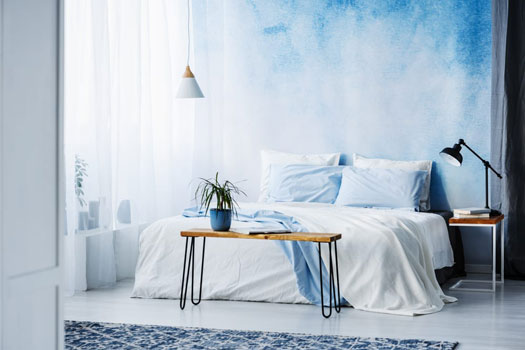
You are not alone in bed (and we're not talking about your snoring companion). Bacteria soon colonies your mattress (thus the musty odor), and who wants to be that near to bacteria? A mattress protector is a washable barrier between you and your uninvited guests.
If you or a loved one suffers from dust mite allergies (feeling a sneeze or itch coming on?) – which affects at least 12 million Britons, according to research by Allergy UK – a mattress protector can help keep the mites out of your bed. So that's not just a respite from the 'yuck' factor mentioned before, but also from allergy problems. Even better, you can wash a mattress protector to get rid of dust mites, something you can't say about mattresses.
Why is your pillow so important?
A proper sleeping position is essential for sleeping peacefully night after night and awakening pain-free. Your pillow aids in maintaining a good sleeping position. How does that stance appear? From the knees and hips to the spine, chest and shoulders, head and neck, the body is in perfect alignment.
If you don't have enough support for your neck and shoulders, or if they're propped at an angle that causes twisting, craning, or crunching, your spine and body will be out of alignment, causing tension and pain in your neck, shoulders, and back, as well as insomnia.
The finest pillow for you is one that is soft to the touch, supports your head, neck, and shoulders, and complements your mattress.
When do you know it's time to get a new pillow?
Bed pillows should be replaced every 18 months, on average. Memory foam pillows have a longer lifespan, lasting up to three years. Synthetic pillows have a shorter lifespan than natural pillows. Pillows of greater quality will endure longer than those of lower grade. You're not receiving the support you need if you're sleeping on a five- or six-year-old pillow, and you're not sleeping as comfortably as you could be.
Pick-a-Pillow instructions
Fill/fiber
- Wool - These pillows are hypoallergenic and mould and dust mite resistant by nature. Wool pillows absorb moisture away from your head and neck and can help you sleep cooler by regulating your body temperature.
- Cotton - Cotton pillows are inherently hypoallergenic and resistant to dust mites and mildew, similar to wool in many respects. Cotton pillows are a great option for persons who suffer from allergies or chemical sensitivities.
- Latex - Latex pillows are firmer than down pillows but yet quite comfy. The contour of these pillows is maintained. They are composed of latex and are meant to provide extra support to the head and neck or to inhibit movement while sleeping.
- Memory foam - In recent years, these pillows have grown quite popular. Memory foam adapts to your unique shape. Memory foam softens and moulds to the lines of your head, neck, and shoulders as it responds to your weight and body heat.
Fill weight
Pillows made of down and synthetic fibres are light, whereas memory foam and latex are heavy. Your pillow's weight is a matter of personal taste. A lighter pillow may be a better choice if you want to re-shape and shift your pillow while you sleep.
Filling quality
Quality counts in every type of pillow for comfort, support, and longevity—and it will be reflected in the price. Select the finest quality pillow your money will allow once you've decided on the sort of pillow fill that's suitable for you. Keep in mind that you'll be sleeping on this pillow for hundreds of hours throughout the course of its life.
Size
A standard-size pillow is large enough for most individuals. It's acceptable if you want a bigger pillow as long as you can maintain proper sleeping position. Your pillow's thickness or thinness should allow you to sleep with your head, neck, and shoulders aligned with your spine while also providing you with comfort. Make sure the pillow cover and pillowcase are both the right size. Don't cram a giant pillow into a little cover, or let a regular pillow float in an extra-large pillowcase.
Fabric
Cover your pillows with natural, breathable textiles. Pillow coverings under pillowcases protect the pillow from stains and perspiration, extending its life. Decorative pillows look beautiful on the bed, but they should be taken off before going to sleep.
Click here to check our pillow collections
